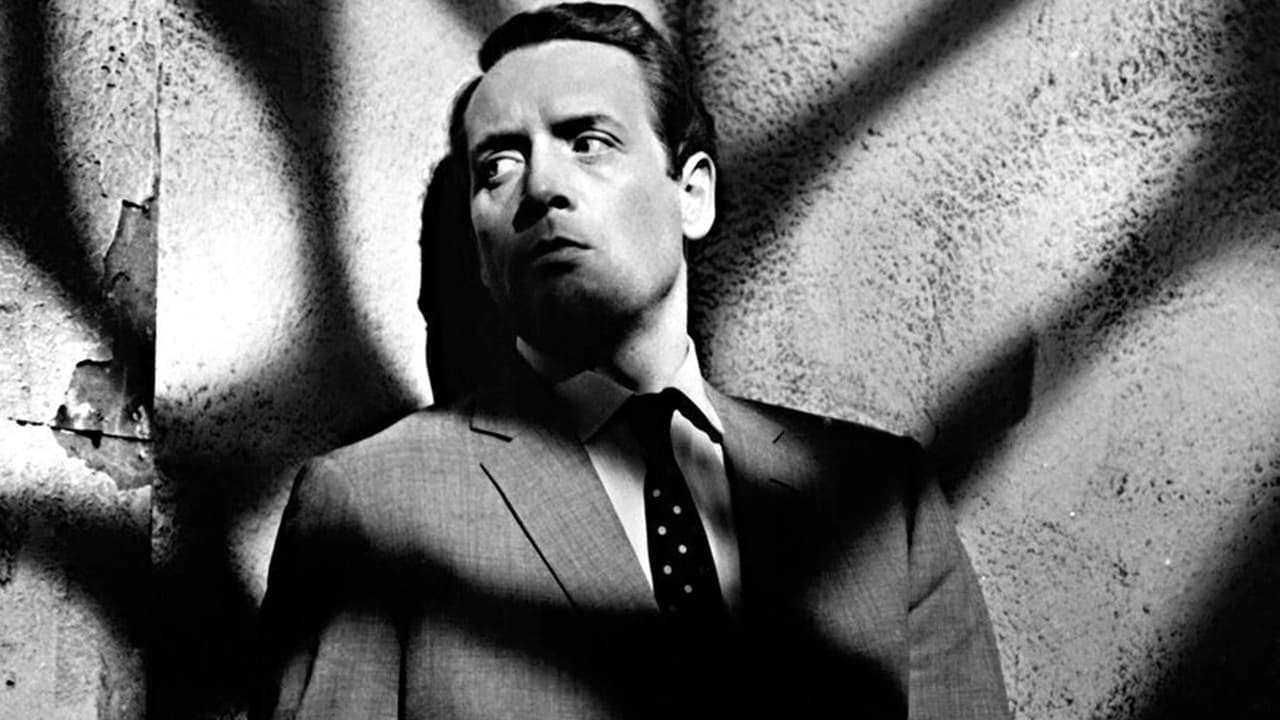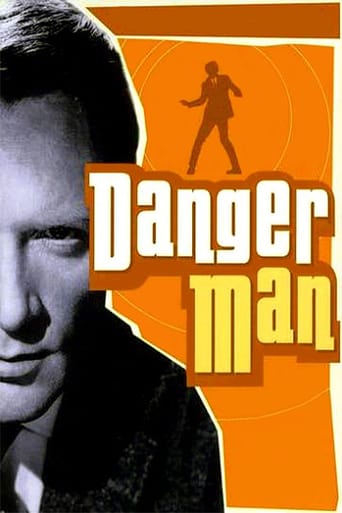

The pedigree for "Danger Man" is a bit confusing. So, I'll try to make sense of it. The show was on for one season and each episode lasted about 23 minutes. Three years later, an hour-long series was created and was called "The Secret Agent"--with Patrick McGoohan once again playing an international 'fixer', John Drake. Then, after this series ended, McGoohan made "The Prisoner"--a show which MIGHT be a sequel to "The Secret Agent"...or it might not. This is because McGoohan's character is not referred to by name...he's just called Number 6. And, you aren't sure whether or not it's meant as a follow-up or not--and I can only assume that the television folks deliberately kept it vague."Danger Man" begins oddly. It explains that John Drake is a sort of international agent--a guy who goes on special assignments for many NATO nations. His nationality is a bit vague and this works reasonably well since McGoohan has an American/Irish/British background, though they seem to imply he's from New England (but the accent clearly ISN'T). Each episode is set in a different locale around the world and, amazingly, the show is wrapped up in about 23 minutes. The show is very well written and interesting--and McGoohan is excellent. The only serious complaint is that the shows sometimes were too hasty and many would have benefited from an hour-long format--something they would get with "The Secret Agent". Well worth seeing and a clever show. Even the sub-par episodes are good--making it at least more consistent than "The Prisoner".A few final observations. The DVD copy is just fine but there really are no special features or captions. Also, as an American born and raised in the Washington, DC area, the introduction makes me laugh. That's because a HUGE office building is superimposed next to the US capitol building. There IS no building this size or that looks remotely like this in DC--now or then. Very strict building codes in the city prevent such monstrosities in the District.
... View MoreIn the "View from the Villa" agent John Drake pulls up in what looks like an Aston Martin DB4 or DB5, thus beating Sean Connery to the punch by several years. At least on the screen. I think it also appears in a few other episodes, but I am not certain.I have spent the last few years slowly catching up on this superb series via net flicks. As other reviewers have noted already the plots were nearly always excellent. The understatement and laconic delivery of Mr. McGoohan a foretelling of others who would try the same style and mostly fail, except for the wonderful Le Carre adaptions, and Mr. Caine's superb Ipcress File. The satire of Establishment figures was often very droll. In the current editions I am getting from Netflicks the music track is provided by a powerful jazz orchestra. What happened to the superb Harpsichord jazz music that I remember from the original UK broadcasts? So much more subtle and intriguing than the blaring band arrangement, although it does have a period flavor I cant deny.Mr. McGoohan passed away recently. I will remember him and Danger Man as one of the very influential forces in my teenage years.
... View MoreThis show never laughs at itself (setting it apart from most of the James Bond and follow-on genre shows). Instead, it projects the inimitable Patrick McGoohan as a consistently efficacious hero: fast-thinking, innovative, ultra-capable, tenaciously-focused on the mission, yet when achieving the mission is not enough, he's able to think outside the box, to re-define his goals and achieve success in a wider context.For a little boy starving to see a hero on television, "Danger Man" (and the subsequent "Secret Agent Man") was just what I needed. A hundred times over the years, facing my own moments of challenge, I remembered how John Drake had handled things. Nevermind the detail of his job being a "secret agent," the essential of this show is: a man of quintessential skill and reason who uses his mind to take him over, under, around or through all obstacles -- and *that* is what you take away from every episode.It's food for the soul.
... View More"DANGER MAN"-"SECRET AGENT"-Produced by ITC Productions. The Half-Hour Episodes,30 minutes each,1960-1961,black and white. The Hour Long Episodes,60 minutes each,1964-1966,black and white. Episodes ran on British Television from 1960-1961,1964-1966. Episodes that ran on American Television from 1965-1966,CBS-TV.Out of all the espionage shows that came out in the 1960's,this show was among the tops of the list and set the standard for the next batch of espionage,intrigue shows to follow suit. This was indeed a highly entertaining series that was full of quick dialogue,twist endings,and some of the most inventive story lines anywhere. Besides,this was way better than James Bond! The series starred Patrick McGoohan as British secret agent John Drake. As for some of the episodes,this series was one action-packed show which feature McGoohan traveling to certain parts of the world to handle situations given to him by his superiors under orders of his Majesty's Secret Service. This was a show that had a lot of action-packed fighting scenes(where Patrick McGoohan's boxing experience shows in some of the episodes)which some were very inventive and very useful in taking out the baddies. The gadgets were amazing and for the most part which could actually exist,and are brought in as part of a plan in some dangerous situations. The gadgets were really cool items like The Exploding Pen,The Watch with a hidden camera and lots more cool stuff! And had a fare for a ladies as well and also show it in some of the love scenes where he trades affairs for sex secrets on the show and in some segments made him a detail well-crafted character. As for the diabolical villains,Drake had the deal with the evil doers out to destroy the world,but saves the day and the organization he works for.ABOUT DANGER MAN-SECRET AGENT............... The series consisted of four seasons done in a unusual manner. In the first season,televised from 1960-1961,Patrick McGoohan's character of John Drake is a NATO intelligence officer working for the UN in New York. There were only 39 half-hour episodes filmed in black and white and some of the earlier Danger Man material hasn't been seen since its original broadcast,and most recently they are now on DVD for your enjoyment. The series was cancelled after its first season,and it was not until 1964 that it was reprised,when the "spy craze" of the time exploded with not only James Bond 007,but for every aspects of a lot of television shows that followed including,"The Avengers","The Man From U.N.C.L.E.",and so many more. It was here during its new format and under its second season,that John Drake not longer works for NATO,but for the British Government Intelligence Agency,"M9",which consisted of hour long episodes for seasons two and three(combined total of 45 episodes),which are filmed in black and white. It wasn't until the summer of 1965,that American audiences were interested in this series as well seeing the exploits of John Drake each week,and from that period in 1965,the ratings soared in which the "Danger Man" was shown as an summer replacement here in the states. The last two episodes of the series,also an hour long each,were filmed in color,and these two episodes were combined into a two hour TV-movie entitled "Koroshi" from 1966. This was actually a compilation of two Danger Man episodes,"Koroshi",and "Shinda Shima". Unfortunably,this was the last of the series,before Patrick McGoohan would made the transition from this role to the next series,"The Prisoner". The storyline deals with John Drake who is being sent to Japan to investigate the murders of two British agents who were under the society of the Koroshi who in turn plan to execute world leaders. However,Drake is sent to destroy the organization and at the end becomes sufficient in destroying the society and from there Drake sets out to destroy the society that is handling the affairs. If you wonder where the producers for the Sean Connery/James Bond thriller,"You Only Live Twice" came up the ideas,then you'll see why the last episodes of Danger Man were brilliant to the core.
... View More